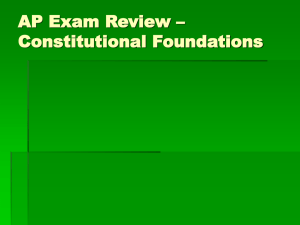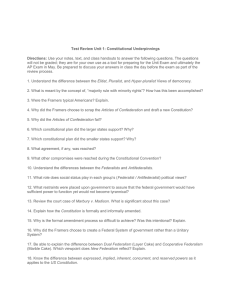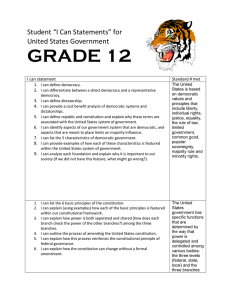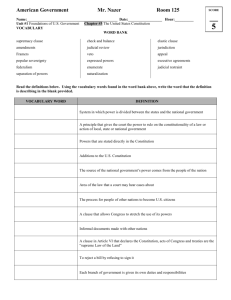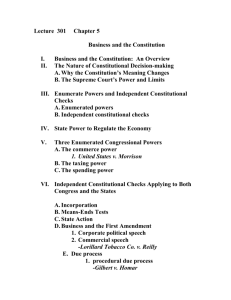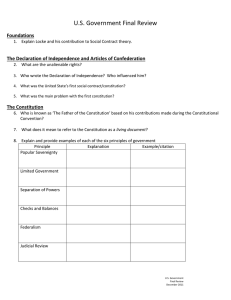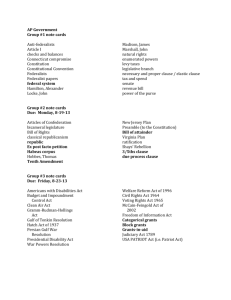REVIEW SHEET – GOVERNMENT FINAL Intro to Government
advertisement
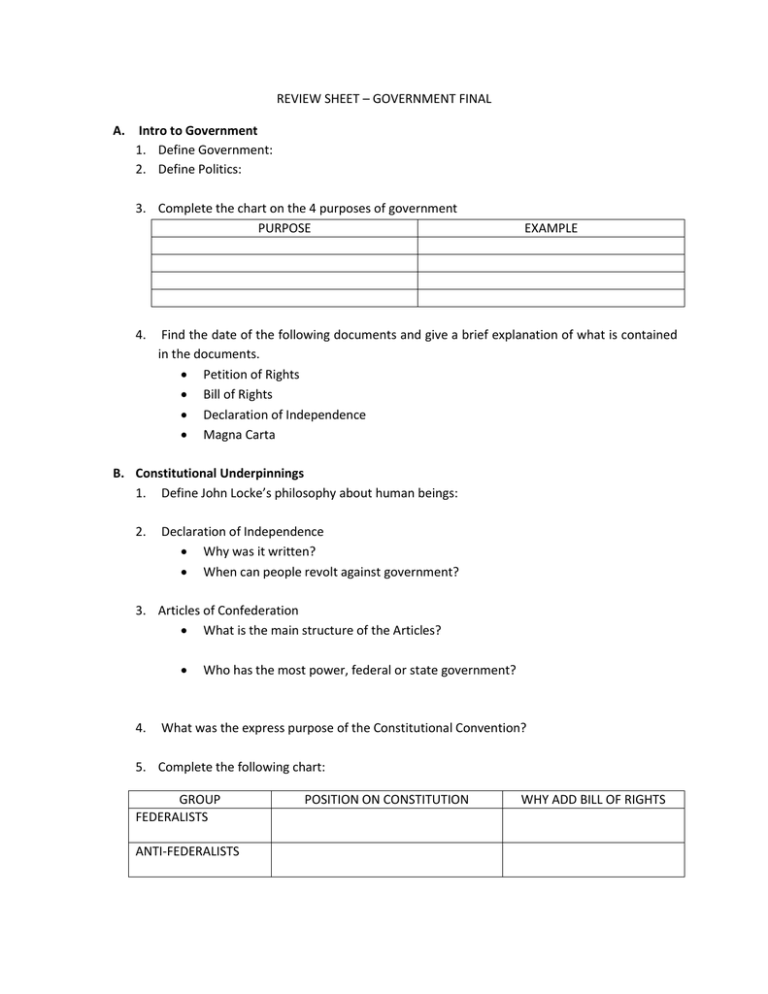
REVIEW SHEET – GOVERNMENT FINAL A. Intro to Government 1. Define Government: 2. Define Politics: 3. Complete the chart on the 4 purposes of government PURPOSE 4. EXAMPLE Find the date of the following documents and give a brief explanation of what is contained in the documents. Petition of Rights Bill of Rights Declaration of Independence Magna Carta B. Constitutional Underpinnings 1. Define John Locke’s philosophy about human beings: 2. Declaration of Independence Why was it written? When can people revolt against government? 3. Articles of Confederation What is the main structure of the Articles? 4. Who has the most power, federal or state government? What was the express purpose of the Constitutional Convention? 5. Complete the following chart: GROUP FEDERALISTS ANTI-FEDERALISTS POSITION ON CONSTITUTION WHY ADD BILL OF RIGHTS C. CONSTITUTIONAL PRINCIPLES 1. Define the following terms and give an example or definition of each: Elastic Clause Enumerated powers Supremacy Clause Concurrent powers Implied powers Checks and Balances Full Faith and Credit Clause Privileges and Immunity Clause Extradition D. THE JUDICIARY 1. According to the Constitution, what is the jurisdiction of the US Supreme Court? 2. Under Article III, and the Constitution, how do you become a federal judge, how long do they serve, and how do you remove a federal judge? 3. Define the following terms: Writ of certiorari Stare Decisis Brief Plaintiff Defendant Civil Case Criminal Case E. CIVIL LIBERTIES 1. List the 6 Freedoms under the 1st Amendment. 2. Define the following terms: Symbolic speech Wall of Separation Unreasonable Search and Seizure Miranda v. Arizona Case F. THE LEGISLATIVE BRANCH 1. Name the two branches of the Legislature, how long they serve and who do they serve? 2. What is the purpose of the Census and which legislative branch is affected by the census? 3. Define the following committees: Standing Committee Select Committee Conference Committee 4. What determines the ratio of members on the committee, or which political party has control of the committee? 5. Define: Filibuster Cloture Franking privilege 6. What are the basic steps in how a bill becomes a law? G. 1. 2. 3. THE EXECUTIVE BRANCH How is the president elected? What is the “magic” number needed to win the Presidency? What are the Constitutional qualifications to become President? 4. What are the Presidents options when presented with a bill from Congress? H. POLITICAL PARTIES, CAMPAIGNS AND ELECTIONS, AND IDEOLOGY 1. Define the following: Primary Caucus Incumbent Two- Party system Open Primary Closed Primary 2. Complete the following chart relating to political ideology Ideology CONSERVATIVE LIBERAL 3. Define political participation . Examples of policies
